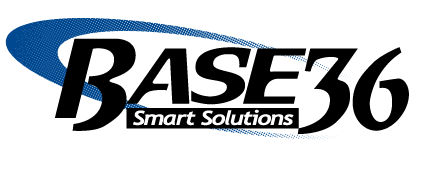Hypertension, typically called high blood pressure, is a persistent medical problem that influences countless people worldwide. Often referred to as the “quiet awesome,” high blood pressure can go unnoticed for many years, progressively damaging various body organs and enhancing the threat of major health and wellness difficulties. Identifying the signs of high blood pressure is important for very early medical diagnosis and efficient monitoring of this condition. In this short article, we explore the principal signs and symptoms of high blood pressure, offering important insights to help individuals identify and address this quiet risk.
It is very important to note that hypertension is a multifactorial problem, affected by a mix of genetic, lifestyle, and ecological aspects. While some people might experience noticeable symptoms, many people with hypertension do not exhibit any type of external indicators. Routine monitoring of high blood pressure is the only sure way to identify high blood pressure precisely. However, some common symptoms might indicate the existence of high blood pressure, and they ought to not be ignored. These symptoms consist of:
1. Frustrations
Migraines, especially those taking place in the early mornings, can be a feasible indicator of hypertension. While headaches can be caused by various factors, constantly experiencing headaches, specifically at the back of the head, ought to trigger more examination for hypertension.
Hypertension can cause raised pressure on blood vessels in the mind, causing frustrations and other neurological signs and symptoms.
2. Tiredness
Feeling worn out and doing not have energy can be an indication of high blood pressure. The increased strain on blood vessels as a result of hypertension can hinder the efficient delivery of oxygen and nutrients to the body’s cells, causing fatigue and a general sense of weak point.
3. Wooziness and impaired thinking
Hypertension can create interruptions in blood circulation to the brain, leading to episodes of lightheadedness and faintness. These signs are especially common when standing up swiftly or after long term periods of resting or resting and can signify hypertension.
4. Shortness of breath
Experiencing problem in breathing or lack of breath, especially during physical exertion, can be an indicator of hypertension. Minimized blood circulation to the lungs due to high blood pressure can impede the exchange of oxygen and carbon dioxide, bring about breathlessness.
In addition, hypertension can cause the build-up of fluid in the lungs, better intensifying breathing troubles.
5. Chest pain
Breast discomfort or discomfort can happen as an outcome of hypertension-induced heart troubles. High blood pressure can stress the heart muscle mass, bring about problems such as angina or perhaps a heart attack. Chest discomfort need to constantly be taken seriously and evaluated by a medical professional.
It is important to keep in mind that while these symptoms can show the visibility of hypertension, they can also arise from other underlying medical conditions. For that reason, a detailed clinical analysis is necessary to determine the reason for these symptoms accurately.
When to Seek Clinical Interest
If you experience any one of the signs and symptoms discussed over or suspect you might have high blood pressure, it is important to seek medical interest promptly. While hypertension itself may absent immediate deadly dangers, uncontrolled high blood pressure in time can lead to extreme difficulties, consisting of cardiovascular disease, stroke, kidney damage, and vision loss.
A health care expert will certainly conduct a thorough assessment, which may include high blood pressure tracking, physical exams, and laboratory tests, to identify high blood pressure precisely. Early cardiobalance ingredienti detection and intervention play an essential function in stopping or managing the lasting effects of hypertension.
- Management and Therapy Options
When diagnosed, hypertension can be properly handled with lifestyle alterations and, sometimes, medication. Embracing a heart-healthy way of living is critical for regulating high blood pressure degrees and lowering the risk of issues. This consists of:
- Eating a well balanced diet plan abundant in fruits, vegetables, whole grains, and low-fat dairy products
- Minimizing salt intake by avoiding refined foods and limiting the use of common salt
- Taking part in routine exercise, such as quick walking, swimming, or biking
- Maintaining a healthy and balanced weight with a combination of a well balanced diet regimen and physical activity
- Avoiding tobacco and extreme alcohol usage
- Taking care of anxiety via relaxation methods like reflection, deep breathing exercises, or engaging in leisure activities
If way of life alterations alone want in managing blood pressure, health care specialists may suggest medicines to assist manage high blood pressure levels. Medicines frequently utilized to treat high blood pressure include diuretics, beta-blockers, optiheart cena angiotensin-converting enzyme (ACE) inhibitors, angiotensin II receptor blockers (ARBs), calcium channel blockers, and others. These medicines function by kicking back capillary, lowering fluid volume, or disrupting hormonal procedures that contribute to hypertension.
Conclusion
High blood pressure is a prevalent condition that often goes unnoticed due to the lack of apparent signs. Nonetheless, numerous indications can suggest the presence of high blood pressure. Frustrations, fatigue, wooziness, lack of breath, and breast discomfort are several of the symptoms related to high blood pressure. It is necessary to understand these indications and look for medical focus immediately to prevent long-term difficulties. An alternative technique, combining way of living adjustments and, if required, drug, can effectively manage blood pressure and improve overall health and wellness.
